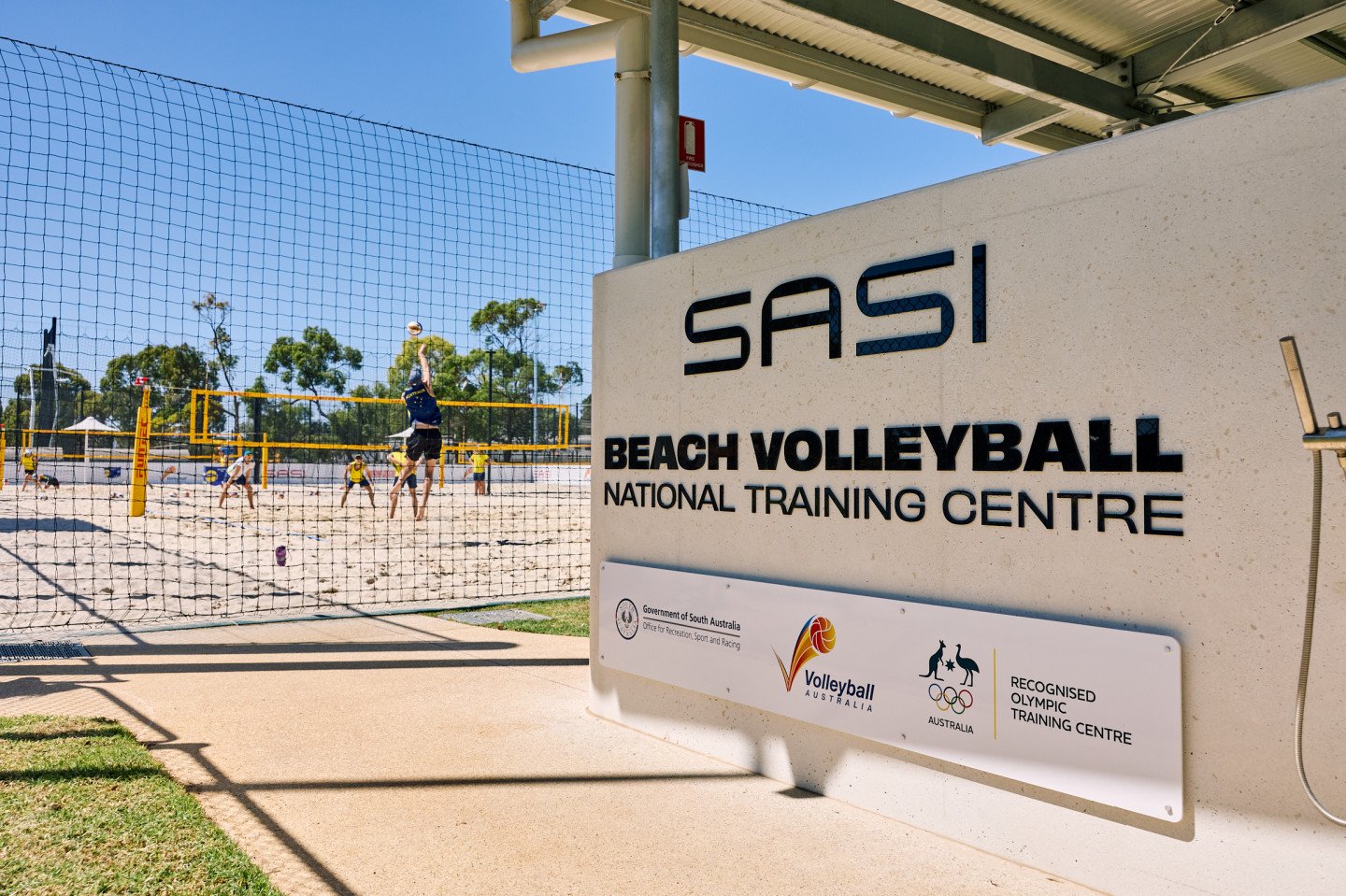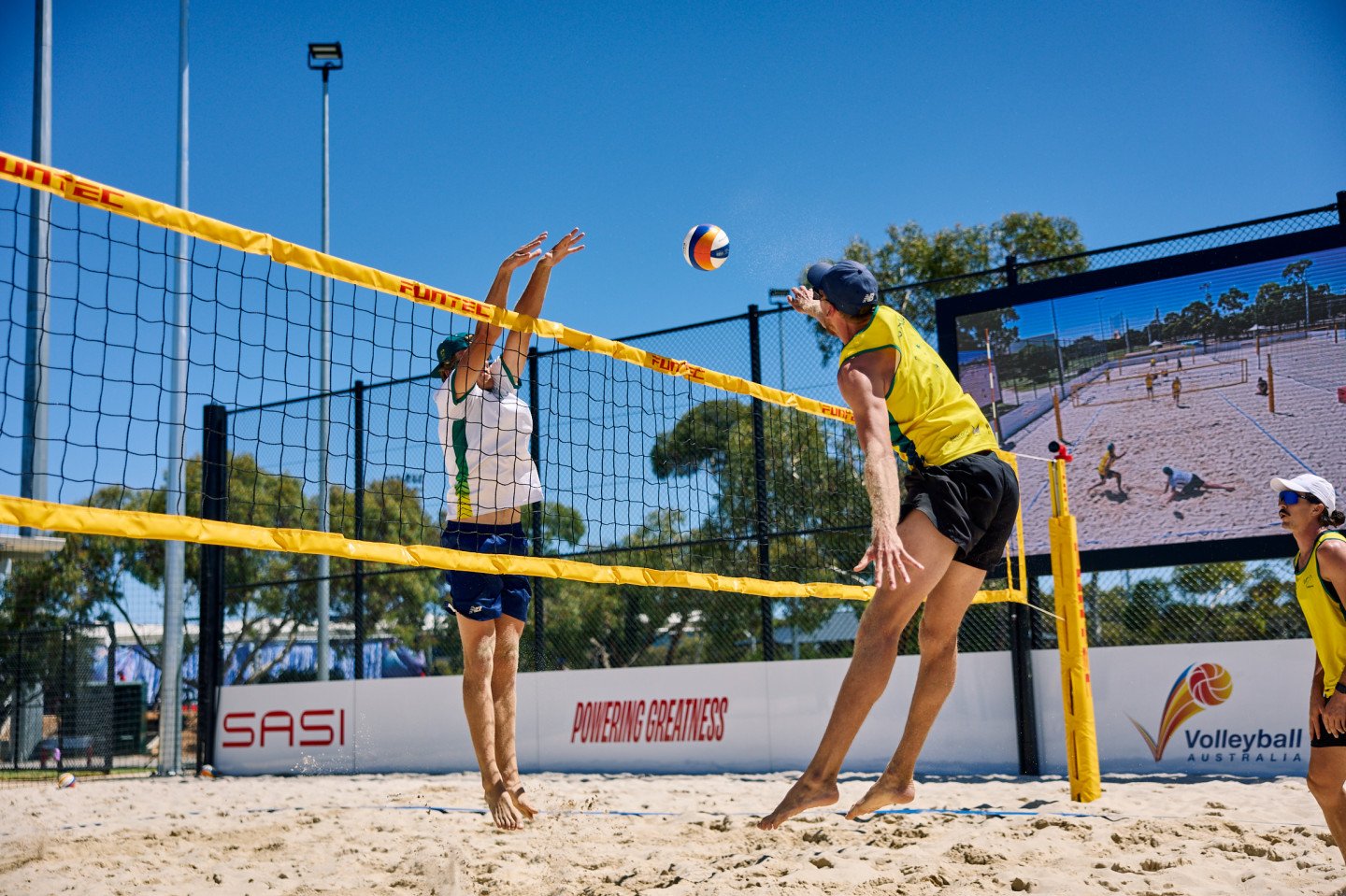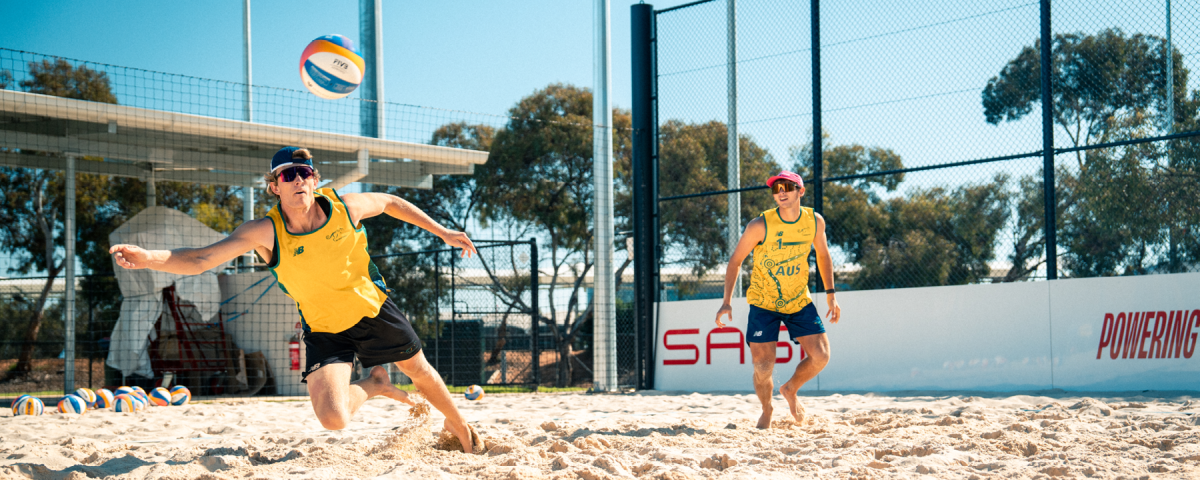Beach volleyball has grown from its Hawaiian origins in the early 20th century into a globally recognised sport, with Olympic status since 1996.¹ Today it is one of the most visible beach sports worldwide, driving the development of related disciplines such as beach soccer and handball.¹
Beach volleyball growth in Australia is strong. The game enjoys strong grassroots participation and international competitiveness. Government support for the Paris 2024 and Brisbane 2032 Olympics is likely to drive further investment in new facilities in the lead-up. Increased media coverage, with Adelaide emerging as a notable hub for both recreational and elite training, is also contributing to the sport’s rise.
The upcoming 2025 World Beach Volleyball Championships, anticipated to be the “largest beach volleyball event ever held in Asia or Oceania,” will take place over 10 days in November. This important event will feature 96 teams from around the world and 192 of the world’s best players battling it out. It will be the most significant beach volleyball competition in Australia since the Sydney 2000 Olympics.²

The new Beach Volleyball National Training Centre, which is the official World Championships Training Venue not only Australian athletes but for all international teams, showcases South Australian sand to create the optimal playing surface whilst integrating state of the art technology. The facility boasts internationally accredited courts, performance analysis cameras, a courtside HD replay screen, and other state-of-the-art features conveniently collocated within the SASI precinct is a benchmark for training and athlete development.
Unlike indoor volleyball, where six players share responsibility, the two-player beach format places extraordinary physical and tactical demands on athletes. The unstable sand surface significantly increases the external load on beach volleyball players, requiring greater distance covered and more explosive actions, requiring each player to be versatile, and a master of all techniques while enduring environmental variables that shape game strategy.³
Research into beach volleyball, a sport that is always changing and improving, is becoming more important, especially as competitiveness grows on a global scale. The need for training and design of facilities based on scientific principles becomes increasingly critical to attain peak athletic performance and competitive edge.
Sand as the Defining Surface
At the heart of the sport lies its most overlooked yet technically critical element: sand. The Fédération Internationale de Volleyball (FIVB) mandates that competition sand meet strict granulometric standards, balancing grain size, angularity, and silt content.¹ Optimal sand should be naturally weathered quartz, free from gravel, clay, or organic impurities, and laid at a depth of at least 40 cm to ensure drainage and consistency.¹ To be approved for the FIVB Beach Volleyball World Tour, a 0.5 kg sterile sand representative sample must also be sent for laboratory analysis.
Sand that is too coarse reduces player dynamics, while excessively fine particles can adhere to skin and generate dust. Players readily recognise that finer sands are easier to play on while coarser sands slow mobility. Studies show that finer, sub-angular grains improve movement efficiency, reduce abrasiveness, and help prevent injuries.¹ Even marginal deviations can compromise both athlete performance and facility longevity, highlighting why sand sourcing, testing, and periodic replacement are essential construction and management considerations.
Biomechanics, Injuries, and Performance
The physiological challenge of competing on sand is profound. The unstable sand surface in beach volleyball elevates energy expenditure during running or jumping, which is estimated to be around 20% higher than on hard surfaces.³ Players typically perform more than 50 landings per match, with the majority occurring on both feet, reducing joint stress compared to indoor volleyball, where one-footed landings are more frequent.⁴ This partly explains why beach players report lower rates of overuse injuries such as jumper’s knee, though acute ankle and knee injuries remain prevalent.⁴
Performance is closely tied to explosive lower-limb power. The physical demands of beach volleyball require repeated vertical jumps for spikes and blocks, often executed under fatigued conditions. A review of 28 relevant papers identified some distinctive patterns in beach volleyball research. Physical abilities such as leaping ability, explosive power, and speed are important drivers of competition success, supported by both offensive and defensive tactics which are closely linked.⁵ A recent systematic review of 19 studies identified jump mechanics, sprint accelerations, and rapid decelerations as defining game demands, requiring both anaerobic and aerobic conditioning.⁶ Elite players typically possess exceptional cardiovascular fitness, enabling them to sustain the repeated bursts of effort required for high-intensity rallies.³
Wearable technologies and customised training programmes are being used to improve athlete performance and prevent injuries. The goal is to learn more about the game’s demands and to teach coaches, researchers, and sports organisations how to improve training effectiveness.

Facility and Management Implications
For designers and facility managers, these physiological and technical requirements translate directly into construction choices that shape both performance and long-term usability. Sand quality and depth must align with FIVB or relevant national standards to safeguard athletes from injury, and to ensure consistent playing conditions and court surface durability. Drainage and moisture regulation are equally critical; poorly managed substrates can quickly lead to compaction, pooling water, or dust hazards, issues that become even more pronounced in indoor or all-weather facilities.
The orientation of the court and its microclimatic context is also critical, as prevailing winds, shading, and spectator comfort can significantly influence both gameplay and user experience. Finally, effective maintenance cycles must be embedded in the operational plan. These should include periodic top-ups or replacement of sand, systematic raking to maintain surface evenness, and stringent control of contamination to preserve both safety and performance over time.
Beach volleyball is far more than a recreational spectacle; it is a sport defined by the interplay between surface, physiology, and design. Research shows that everything from the microscopic structure of sand grains to the macro-scale organisation of training and recovery influences performance, injury risk, and athlete longevity. For facility designers and managers, these insights translate directly into choices about materials, drainage, orientation, and maintenance that determine whether a court is simply functional or truly world-class. In this way, beach volleyball exemplifies how sport, science, and design converge, offering lessons that extend well beyond the court itself.
What emerges is a picture of a sport where physiology, biomechanics, and environment intersect in unique ways. Athletes push their bodies to produce explosive power on an inherently unstable surface, while coaches and scientists analyse workloads, tactics, and recovery strategies to refine performance. Designers and managers, in turn, provide the physical stage that allows this interplay to unfold.
In this sense, beach volleyball embodies a modern model of sport: one where success depends as much on scientific evidence and thoughtful facility provision as it does on skill and determination. Recognising the intricacies of the game from the sand beneath the players’ feet to the global systems that support it is what’s driving the sport to thrive.
With the convenience of being embedded within the city’s recreational infrastructure, and featuring carefully sourced local sand, the acquisition of which was a complex and involved process, Hames Sharley designed the National Beach Volleyball Centre in Mile End, part of the SASI high performance sports precinct in Adelaide. Like other first-class facilities, these courts illustrate how design excellence supports both elite competition and high performance training.
References
1. Kasprzak M, Łopuch M. Sand: A critical component for beach volleyball courts. Applied Sciences. 2022;12(14):6985. doi:https://doi.org/10.3390/app12146985
2. Hanka V. 100 days to go: Adelaide set to host world’s biggest beach volleyball festival • FIVB beach volleyball world championships adelaide 2025. FIVB Beach Volleyball World Championships Adelaide 2025. Published August 6, 2025. Accessed September 23, 2025. https://adelaide2025.volleyball.org.au/news/100-days-to-go-adelaide-set-to-host-worlds-biggest-beach-volleyball-festival/
3. Đurković T, Babok D, Rešetar T. Differences in game dynamics between high-level volleyball and beach volleyball matches. Journal of Functional Morphology and Kinesiology. 2024;9(1):28. doi:https://doi.org/10.3390/jfmk9010028
4. Tilp M, Rindler M. Landing Techniques in Beach volleyball. PubMed. 2013;12:447-453.
5. Hrynchenko I, Sobko I, Tiurin I. Current Global Trends and Prospects for Research in Beach volleyball: an Analytical Review of the Scientific Literature. Educational Challenges. 2025;30(1). doi:https://doi.org/10.34142/2709-7986.2025.30.1.13
6. Marzano M, José Pino-Ortega, Priego-Quesada JI, Guzmán F, García A. Physical performance and game demands in beach volleyball. Journal of Human Sport and Exercise. 2024;20(1):79-92. doi:https://doi.org/10.55860/g1z4az52
Images courtesy of South Australian Sports Institute 2025






